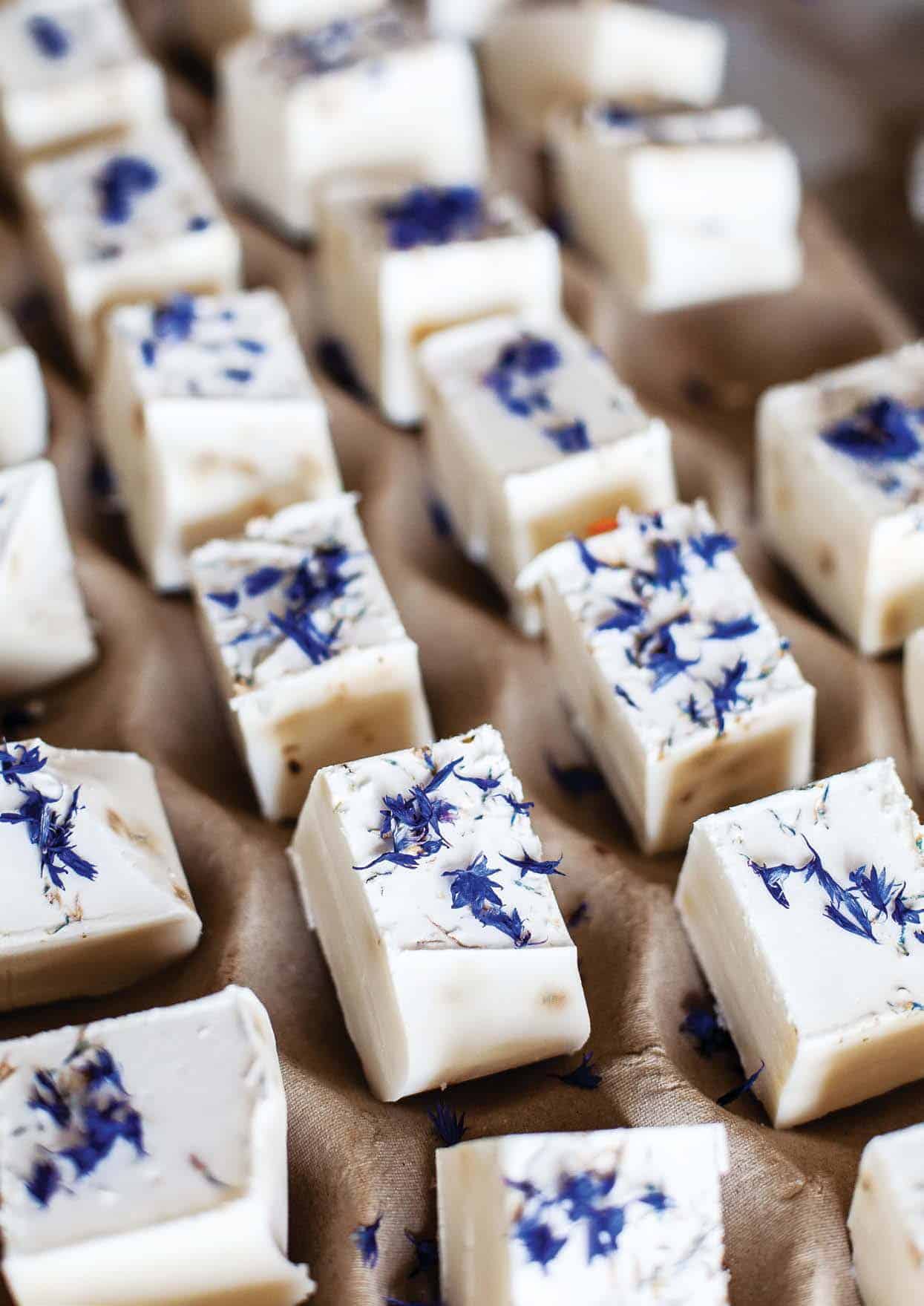By using oils and fats readily available, soap can be made at home free from synthetic fragrances and colours and can be used to wash everything from your hair and body to household dishes.
There are only two ways to make soap using raw ingredients; cold process and hot process. Cold-process soap making uses heat at the beginning of the process only, while hot-process soap making continues to use heat beyond the initial stages to cure soap faster.
Soap is made from four basic ingredients: animal fat or oil, lye (sodium hydroxide), water and essential oils. This will produce a bar of soap with the colour properties of the fats or oils you use. For example, lard produces a very white soap while olive oil produces a light-green soap, and essential oils are added as fragrance.

